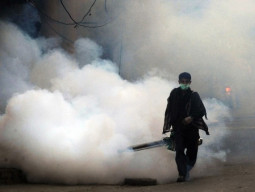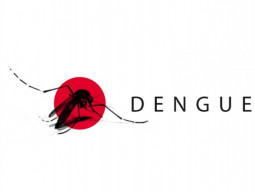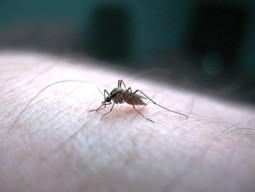
Environment Protection Department teams have twice found dengue larvae at Jinnah Hospital in two weeks. A special squad including EPD and health secretaries that raided the hospital on Tuesday issued a notice to the administration asking it to inspect the premises and remove mosquito breeding sites in two days, EPD Deputy Director Naseemur Rehman Shah told The Express Tribune.
The raiding team found dengue larvae in large numbers at a ward and in desert coolers installed at a hostel on the premises. During a raid at the hospital on August 27, the special squad had found dengue larvae in the hospital’s burnt unit, said Environment DO Younis Zahid, a member of the squad.
He said they had also found dengue larvae at three other hospitals during raids conducted last month. These were Naz Hospital, Kalsoom Maternity Hospital and Gulab Devi Hospital. Zahid said at Gulab Devi Hospital they had found larvae at desert cooler installed at the office of the medical superintendent.
Besides hospitals, the EPD had also been raiding tyre shops, warehouses, junkyards, nurseries and construction sites in the city. According to the eight month (January to August) data compiled by the department, the highest incidence of dengue larvae was in Gulberg Town.
The EPD team found these at 31 places in Gulberg Town. There were 27 such sites in Aziz Bhatti Town and 22 in Data Ganj Bakhsh Town. The lowest incidence was in Wagha Town where the team found the larvae at only three sites. In sum, the EPD found dengue larvae at 139 sites across the city during raids from January to August.
Zahid said another place where dengue larvae were found was the office of the Geological Survey of Pakistan.
He said tolerance for negligence in anti-dengue raids was very low among government high-ups this year. Therefore, he said there was a lot of competition among departments assigned the task for better performance. This could be a reason for higher number of larvae-find reports during raids this year.
However, he said he felt the incidence could have been low had the Social Welfare Department done a better job at detecting and removing breeding sites in areas assigned to it.
Social Welfare Department Director (planning) Muhammad Suleman dismissed the suggestion that high incidence of dengue larvae was because of his department’s failure to complete the tasks assigned to it. He said the Social Welfare Department was responsible only for arranging campaigns to raise awareness among the public about dengue fever prevention measures.
EPD Deputy Director Shah said the larvae collected during the raids had been sent for analysis to the Institute of Public Health. He said the sites had been sprayed with anti-dengue mosquito insecticide.
A survey of five other districts during this time period had found dengue larvae at 55 sites in Rawalpindi; 34 in Gujranwala; seven in Sheikhupura; four in Faislabad, and none in Multan. The Health Department had documented 47 dengue fever cases in Rawalpindi during the year.
Published in The Express Tribune, September 8th, 2015.
































COMMENTS
Comments are moderated and generally will be posted if they are on-topic and not abusive.
For more information, please see our Comments FAQ